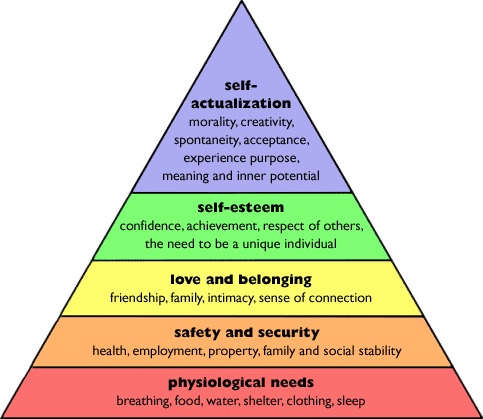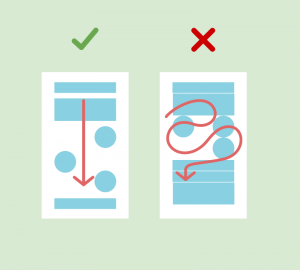One of the biggest things that we try to do at Officevibe is explain the human side of business.
We want leaders to have an understanding of how to treat employees so that they are more engaged and enjoy their work, ultimately leading to a more successful business.
I studied psychology in University and still spend a lot of my free time reading up on human behavior. If managers could have a better sense of their employees’ behavior, they’d be better able to help them grow and be better at work.
Understanding human behavior can help us improve employee engagement and create more productive workplaces.
The five psychological theories that I’ll go through today are only scratching the surface of the amount of research that’s out there on what affects human behavior. Humans are so fragile and complex, and we haven’t even come close to fully understanding how our minds work —although incredible progress has been made.
The Hawthorne Effect
The Hawthorne Effect is the effect that being observed leads to higher productivity. The researchers conducted a series of experiments at a factory in Hawthorne, Chicago, looking at what effect observation had on worker’s performance.
The experiments, done in the 1920’s, would look at what happened if they changed several parts of employees’ working conditions, like lighting, breaks, hours, etc. After every change, employee productivity went up.
The researchers concluded that employees were more motivated to work harder because more attention was being paid to them, and not the actual changes themselves.
What this means for workplace leaders, is that employees will work harder if they know they’re being observed. Micro-managing your employees will have the complete opposite effect, as it will cause disengagement and leave employees demotivated. One way to go about this is to consistently check in on employees and provide feedback on their work.
Simply telling employees that you’re there for them to help answer any questions might be good enough. You could also tell employees that you’ll check their work periodically to see how they’re doing. Knowing that you’re there watching over them (without micromanaging) will get them to perform better. Also, encourage employees to give you feedback on how you’re doing as a leader in order to consistently improve.
Maslow’s Hierarchy Of Needs
This is one of the most famous theories in psychology and human motivation for good reason. I’m sure that everyone reading this has seen the hierarchy before, but essentially what the theory is, is that a person’s basic needs must be met before they can go on to higher level needs.
The Hierarchy of Needs theory was coined by psychologist Abraham Maslow in his 1943 paper “A Theory of Human Motivation”.

The hierarchy has five levels to it:
- Physiological: air, food, water, sex, sleep, etc.
- Safety: health, personal well-being, financial and employment stability, security against accidents, etc.
- Belonging: love, intimacy, friendship, family, social cohesion, etc.
- Esteem: self-esteem, confidence, achievement, respects, etc.
- Self actualization
According to the hierarchy, you need to achieve the first, before moving on.
The way that leaders can apply this is by making sure that all of your bases are covered. Let’s go through each one quickly.
Physiological – Pay employees a fair salary so that they can afford food, shelter, etc.
Safety – Most companies offer insurance as part of their benefits package, but another thing you can do as a leader is remind an employee what a great job they are doing. Showing them that recognition will give them the employment stability they need.
Belonging – While you can’t ultimately control the love and intimacy aspects of this one, you can encourage team building to build those social connections at work.
Esteem – Research has shown that recognition means more when it comes from your coworkers. Encourage an environment of continuous growth through praise and constructive feedback. Also, giving employees autonomy over their work will help them build that confidence.
Self-Actualization – Allow employees to pursue side projects or learn ways to be even better at their job. Things like mentoring or coaching sessions can be incredibly valuable to an employee.
Authentic Self-Expression
Employee turnover is incredibly expensive and damaging to your culture, so it’s important that employees are satisfied on day one. According to recent research, the secret to making employees happy is by encouraging self-expression and letting new employees bring their unique values and perspectives to the job. This has to be done from day one.
What the research says, is that many onboarding processes are flawed, where they try and indoctrinate employees into the way the company does things instead of simply allowing employees to express themselves and bring their insights to the job.
When people start to not behave like themselves they start to question themselves and they become automatically disengaged. Because they start to wonder if they themselves are any good. They question their own self-worth.
Herzberg’s Motivation-Hygiene Theory
This is probably the most important, and most interesting theory on this list. The theory, which was developed by psychologist Frederick Herzberg in 1959, says that job satisfaction and dissatisfaction are actually measured in different ways, and are not two opposite ends of the scale. Herzberg spent five years studying job satisfaction, after he noticed such an increase in job dissatisfaction.
The theory is, that “motivation” factors, like recognition, growth, autonomy, and enjoying the work itself are what really lead to job satisfaction. On the other hand, job dissatisfaction comes from “hygiene” factors, like the physical work environment, salary, and job security.
The reason this theory is so interesting, is that fixing the issues that lead to job dissatisfaction (like paying someone a higher salary) won’t necessarily lead to job satisfaction. All those fancy perks and bonuses don’t mean anything if we have no autonomy, recognition, or growth at work.
Even more interesting, being recognized and having that autonomy won’t offset being paid poorly or not enjoying your work environment.
Groupthink
Groupthink is a psychological phenomenon that happens in a group of people, where the search for harmony and conformity leads people to not innovate and not express their true opinions; which usually leads to poor decisions being made.
Managers need to be aware of this is during brainstorming sessions. While a great idea in theory, what usually ends up happening is the loudest person in the room usually ends up taking over and end up controlling the meeting.
The real issue with this is research shows that people are more creative when they’re left alone and are uninterrupted. Also, according to studies by Mihaly Csikszentmihalyi, the most creative people in many fields are often introverted.
Without great solitude, no serious work is possible – Picasso
Decades of research show that individuals almost always perform better than groups, and group performance gets worse as group size increases. People in groups tend to sit back and let others do the work and often give into peer pressure.
Interestingly, research shows that the only time brainstorming is better than working alone is with electronic brainstorming. The theory is, the privacy of your own screen helps mitigate a lot of the issues with groupthink.
A tool we recently started using at Officevibe is Slack, which is slowly becoming the most popular collaboration tool on the market. Instead of trying to schedule a brainstorming session, we’ll just communicate in Slack about what issue we’re trying to solve.
Any Other Psychological Theories We Should Have MentionKnow About?
Let us know your thoughts on Twitter @Officevibe.
(253)
Report Post






